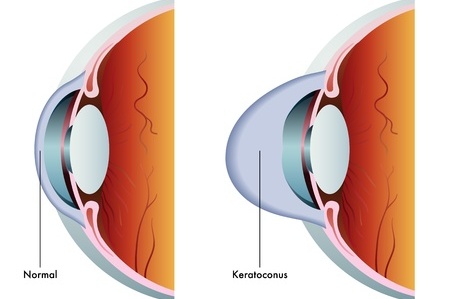If you are concerned that you might have keratoconus, it is important to see your GP or local optometrist for an eye examination. They will do some initial tests and can help work out what is causing your vision to be blurry.
After these initial tests, you are likely to need more detailed testing by an optometrist and/or an eye surgeon (ophthalmologist). These tests may include the following:
An eye test
You will be asked to read letters from different rows of a chart. This measures how well you see at certain distances.
An examination of the inside of your eye
In this test, drops are put in your eye to make the hole in the centre of your eye (your pupil) wider. This is called dilating your pupils. A special magnifying lens is used to look inside your eye to find out the cause of your blurred vision.
A slit lamp test
In this test, your external eye structures, such as your cornea, eyelids and conjunctiva, are examined using a microscope along with a slit lamp to detect any abnormalities. Before the test, fluorescein drops are put in your eye to make the abnormalities more prominent and obvious. This test checks for eye problems such as keratoconus, injury to the cornea and uveitis.
A corneal topography test
This is a computerised test that creates a map of the curve of your cornea. It is able to detect corneal abnormalities such as swelling or scarring.
A tonometry test
In this test, an instrument is used to measure the pressure inside your eye. This test checks for other eye problems, such as glaucoma.







